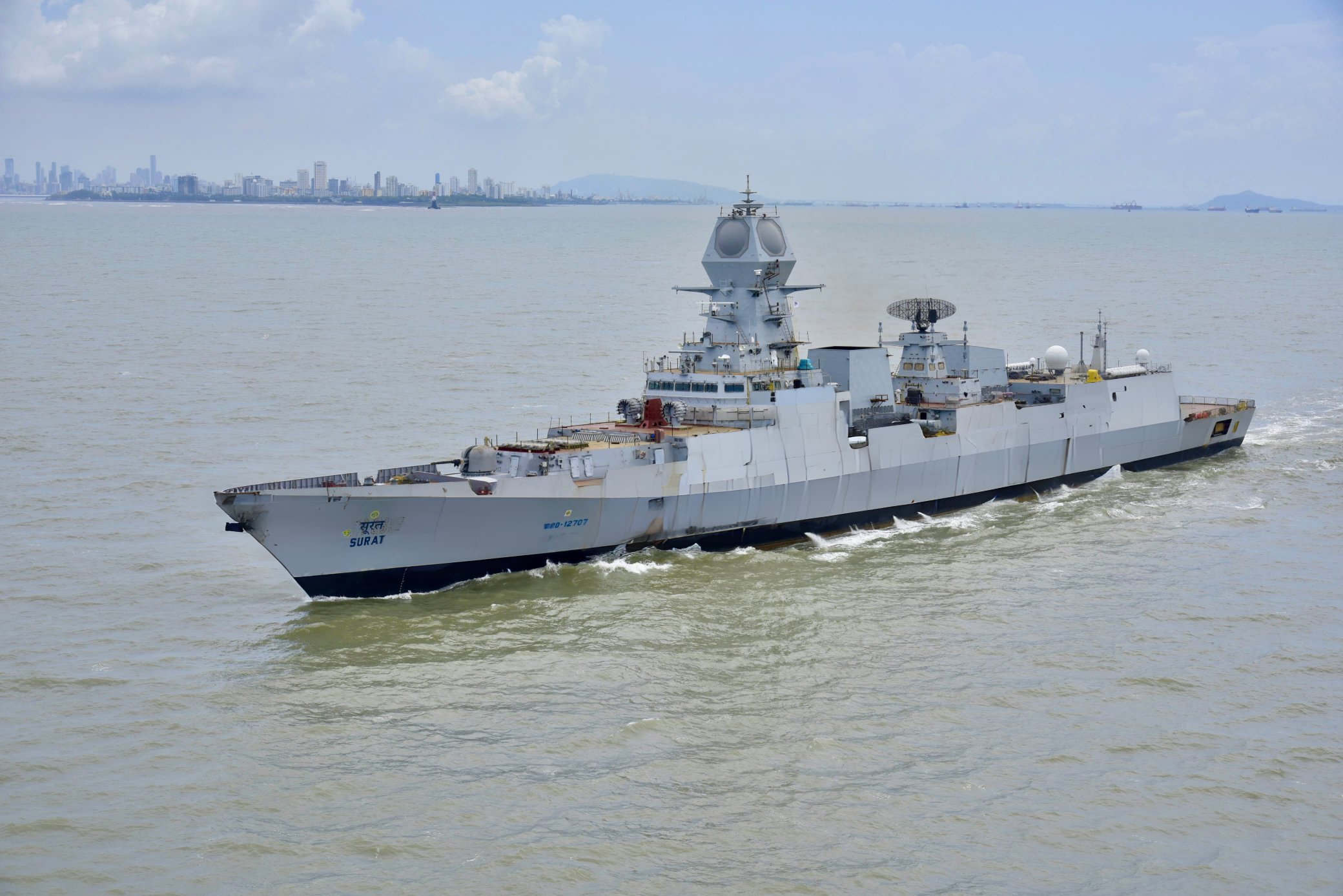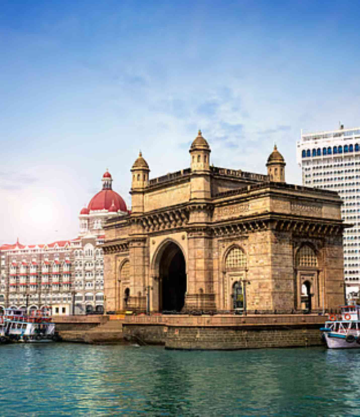The Indian Navy marked a significant milestone on January 15, 2025, by commissioning three new naval combatants: INS Surat, INS Nilgiri, and INS Vaghsheer. This historic event took place at the Naval Dockyard in Mumbai and was presided over by Prime Minister Narendra Modi, who emphasized the importance of these additions in enhancing India's maritime capabilities and self-reliance in defense manufacturing.
Overview of the New Ships

INS Nilgiri
Type: Stealth Frigate
Class: Lead ship of Project 17A
Features: Advanced stealth technology, enhanced survivability, and capabilities to operate multiple helicopter types. It represents a significant upgrade from the Shivalik-class frigates and showcases India’s growing expertise in indigenous shipbuilding.

INS Surat
Type: Guided Missile Destroyer
Class: Final vessel of Project 15B
Weight: Approximately 8,000 tons
Capabilities: Equipped with advanced weaponry including BrahMos supersonic cruise missiles and Barak-8 surface-to-air missiles. Notably, it is India’s first AI-enabled warship, integrating systems from various international sources.

INS Vaghsheer
Type: Submarine
Class: Final submarine under the Scorpene-class Project 75
Role: Designed for anti-surface warfare, anti-submarine warfare, and intelligence gathering. It features advanced stealth capabilities and is built for future upgrades like air-independent propulsion technology.
Strategic Implications
The commissioning of these vessels is seen as a strategic response to the expanding naval capabilities of China and Pakistan. Prime Minister Modi stated that this initiative is a step towards making India a major maritime power while reinforcing the country's commitment to an open and secure Indo-Pacific region. The event underscores India's ambition to enhance its naval fleet amid concerns about regional security dynamics.The simultaneous induction of these three ships also reflects India's commitment to bolstering its indigenous defense production capabilities. Over 75% of the warships were developed in-house, showcasing a significant shift towards self-sufficiency in military manufacturing. This move aligns with the government's broader defense strategy that aims to modernize the armed forces while reducing reliance on foreign suppliers.
How does the commissioning of these ships impact India's defense strategy?
The commissioning of INS Surat, INS Nilgiri, and INS Vaghsheer on January 15, 2025, significantly impacts India's defense strategy by enhancing its naval capabilities and reinforcing its commitment to self-reliance in defense manufacturing.
Strengthening Naval Capabilities
The addition of these three advanced vessels marks a pivotal moment for the Indian Navy, reflecting a substantial leap in technological prowess. INS Nilgiri and INS Surat are equipped with state-of-the-art weaponry, including BrahMos and Barak-8 missiles, enhancing India's anti-surface and anti-air warfare capabilities. This advancement allows the Navy to operate effectively in both offensive and defensive roles, crucial for maintaining maritime security in the increasingly contested Indo-Pacific region.
Strategic Autonomy and Self-Reliance
The commissioning underscores India's strategic autonomy by showcasing its ability to design, develop, and manufacture sophisticated naval platforms indigenously. Built primarily at Mazagon Dock Shipbuilders Limited (MDL), these ships symbolize India's progress towards reducing dependency on foreign suppliers while advancing its position as a global defense leader.
The successful integration of advanced technologies into these vessels demonstrates India's growing competence in developing cutting-edge naval technologies
Response to Regional Threats
The commissioning comes at a time when India faces heightened maritime challenges, particularly from the increasing presence of the Chinese Navy in the Indian Ocean Region. The enhanced capabilities of these new ships enable India to better protect its sea lanes, counter potential threats, and project power across the region. This is critical for maintaining a balance of power and ensuring freedom of navigation amidst rising tensions
Economic Implications
India's commitment to indigenously built naval assets is also reflected in its projected defense spending. The country is expected to invest approximately $35.2 billion in procuring various types of indigenous vessels and submarines over the coming years. This investment not only strengthens military capabilities but also fosters economic growth within the domestic defense sector by encouraging collaborations between major contractors and smaller suppliers
Conclusion
The commissioning of INS Surat, INS Nilgiri, and INS Vaghsheer marks a pivotal moment in India's naval history and represents a leap forward in its quest for maritime strength and self-reliance. As India continues to develop its indigenous defense capabilities, these new vessels will play a crucial role in safeguarding national interests and asserting India's position as a formidable maritime force in the region
With inputs from agencies
Image Source: Multiple agencies
*The views expressed are personal to the author and do not reflect the platform's opinion of
the same.
© Copyright 2024. All Rights Reserved Powered by Vygr Media.






















